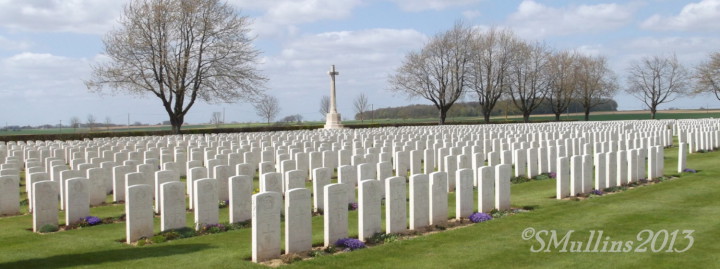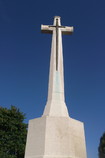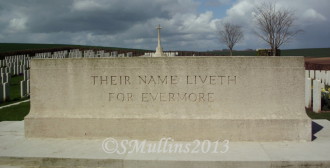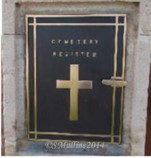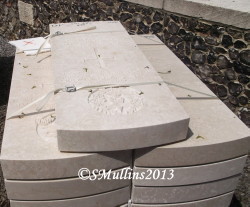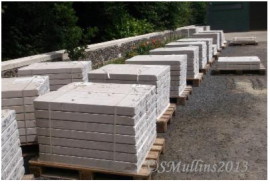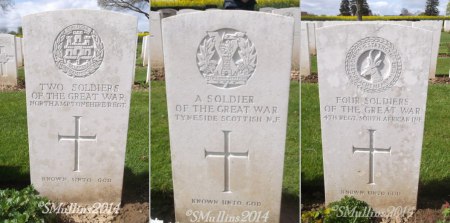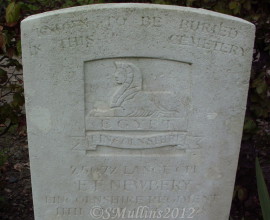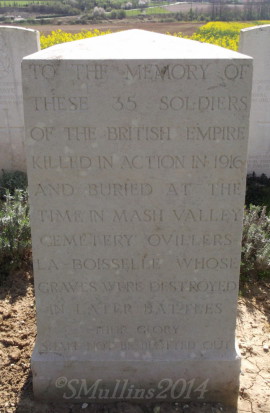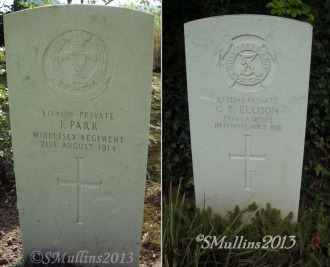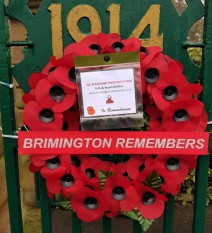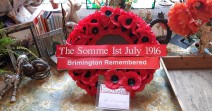
Cemeteries
"In Perpetuity"
During our many years
researching Brimington’s soldiers we have been privileged to visit literally hundreds of Commonwealth War Graves
Commission cemeteries. And we have never failed to be deeply moved and highly impressed by the dedication still shown to the British and Commonwealth soldiers by the
Commission.
Individual graves are marked by uniform headstones, different only in their inscriptions: the national emblem or regimental badge,
rank, name, unit, date of death and age of each casualty is inscribed above an appropriate religious symbol and a more personal dedication chosen by relatives.
More than half of Brimington's Great War soldiers have graves. Many of their headstones were weather worn and barely readable, but in the years we have been visiting the western front some have been replaced whilst other are still waiting.
Commonwealth War Graves Commission Cemeteries - Facts & Figures
Cemetery Register
At each cemetery you will find a printed register showing the service details and, in some cases, family details, of the men and women buried. There will also be a grave plot reference and a layout plan of the cemetery to help find the grave. And a visitors book which you are invited to sign, and leave your thoughts.
Renewal and Replace
It is a constant battle against time and weather to maintain the headstones. Damage & erosion is routinely inspected, and maintenance is an on going task. A damaged or eroded headstone - a name that cannot be read - is unacceptable, there is a constant 'work in progress' of inspections of headstones & memorials. Eroded headstones are re-engraved, but where the damage is beyond repair headstones are replaced.
'A Soldier of the Great War"
Over 700,000 British and Commonwealth soldiers are buried but not identified by name or have no known grave but are remembered on a memorial.
So of course it is possible that many of Brimingtons soldiers classified as 'no known grave' are buried somewhere.
In some cases soldiers were buried in collective graves, as distinguishing one body from another was not possible and so one headstone covers more than one grave.
If a soldiers country, rank, and/or regiment could be accurately confirmed then the headstone would reflect the details.
You see so many different headstone inscriptions as you walk along the rows and rows of graves in CWGC cemeteries - here are just a few:
BURIED 'SOMEWHERE'
There are a great number of soldiers who are known to be buried in a
particular place but the exact burial plot was not recorded or was lost.
One of our Brimington men - L/Corp Edward Newbery is buried somewhere in Wancourt British Cemetery in France, along side over 1900
comrades.
His headstone is located at the periphery of the cemetery and bears the inscription
'Known to be buried somewhere in this cemetery'
Unfortunately the headstone is weather-worn and the lettering very faint
LOST & LOST AGAIN.....
During the four years of fighting and with battle lines ever changing, many graves and burial grounds were completely destroyed by artillery - some more than once.
Eventually comrades would erect memorials to the men who were lost and lost again.
TO THE MEMORY OF THESE 35 SOLDIERS OF
THE BRITISH EMPIRE KILLED IN ACTION IN 1916
AND BURIED AT THE TIME IN MASH VALLEY
CEMETERY OVILLERS LA BOISELLE
WHOSE GRAVES WE DESTROYED
IN LATER BATTLES
THEIR GLORY SHALL NOT BE BLOTTED OUT
The Beginning and the End
St Symphorien Cemetery, Mons
St. Symphorien cemetery was established by the German Army in August 1914 as the final resting place for British and German soldiers who were killed at the Battle of Mons. Brimington soldier George Insley is buried there and despite its significance we found the cemetery quite lovely, serene and unique in its layout.
Among those also buried there is Private John Parr of the Middlesex Regiment who became the first British soldier to be killed in action on the western front. And ironically the last British soldier to be killed Private George Ellison of the Royal Irish Lancers is also buried in St Symphorien- and they are buried only a few feet apart.
Not Forgotten Brimington Not Forgotten Brimington
